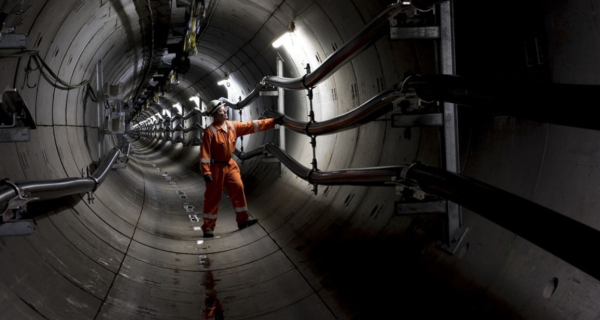London Power Tunnels
Contents |
[edit] Introduction
The London Power Tunnels project is a National Grid infrastructure investment in London’s electricity transmission system. The project is the first significant renovation of the city’s power grid since the 1960s. The total cost is estimated at £1bn and is expected to take 18 years.
Much of London’s electricity infrastructure is already delivered through a network of underground cables. However, the majority of this network is just below the surface of the road, which means maintenance (and any significant replacement) takes place above ground - causing significant disruption to the city’s traffic. The construction of new tunnels requiring a significant amount of excavation under Tube lines, canals and rivers provides an alternative.
[edit] Section One
The first phase of the project, known as LPT1, began in February 2011 and was completed in 2018.
This phase concentrated on constructing a 30km network of underground tunnels from Hackney to Willesdon from east to west, and from Kensal Green to Wimbledon in the south. The works required the installation of the longest single-length power cables in an underground utility tunnel in the country.
The tunnels carry 192km of 400kV cable and 30km of 132kV cable. This created 10 new transmission circuits which are able to support 20% of London’s electricity demand.
To support National Grid’s sustainability initiatives, the organisation recycled 99% of the materials excavated during this phase of the project.
[edit] Section Two
Referred to as London Power Tunnels (LPT2), the second phase of the project began in March 2020. This will carry a network of cable tunnels from Wimbledon to Crayford. It is projected that LPT2 will be fully operational by 2026.
The majority of LPT2 tunnels will be approximately 30m deep. This is roughly equivalent to the height of a 10 storey building. This second phase will result in a new network of cable tunnels approximately 32.5km in length.
[edit] Related articles on Designing Buildings
Featured articles and news
Government consultations for the summer of 2025
A year of Labour, past and present consultations on the environment, the built environment, training and tax.
CMA competitiveness probe of major housing developers
100 million affordable housing contributions committed with further consultation published.
Homes England supports Greencore Homes
42 new build affordable sustainable homes in Oxfordshire.
Zero carbon social housing: unlocking brownfield potential
Seven ZEDpod strategies for brownfield housing success.
CIOB report; a blueprint for SDGs and the built environment
Pairing the Sustainable Development Goals with projects.
Types, tests, standards and fires relating to external cladding
Brief descriptions with an extensive list of fires for review.
Latest Build UK Building Safety Regime explainer published
Key elements in one short, now updated document.
UKGBC launch the UK Climate Resilience Roadmap
First guidance of its kind on direct climate impacts for the built environment and how it can adapt.
CLC Health, Safety and Wellbeing Strategy 2025
Launched by the Minister for Industry to look at fatalities on site, improving mental health and other issues.
One of the most impressive Victorian architects. Book review.
Common Assessment Standard now with building safety
New CAS update now includes mandatory building safety questions.
RTPI leader to become new CIOB Chief Executive Officer
Dr Victoria Hills MRTPI, FICE to take over after Caroline Gumble’s departure.
Social and affordable housing, a long term plan for delivery
The “Delivering a Decade of Renewal for Social and Affordable Housing” strategy sets out future path.
A change to adoptive architecture
Effects of global weather warming on architectural detailing, material choice and human interaction.
The proposed publicly owned and backed subsidiary of Homes England, to facilitate new homes.
How big is the problem and what can we do to mitigate the effects?
Overheating guidance and tools for building designers
A number of cool guides to help with the heat.
The UK's Modern Industrial Strategy: A 10 year plan
Previous consultation criticism, current key elements and general support with some persisting reservations.
Building Safety Regulator reforms
New roles, new staff and a new fast track service pave the way for a single construction regulator.

























